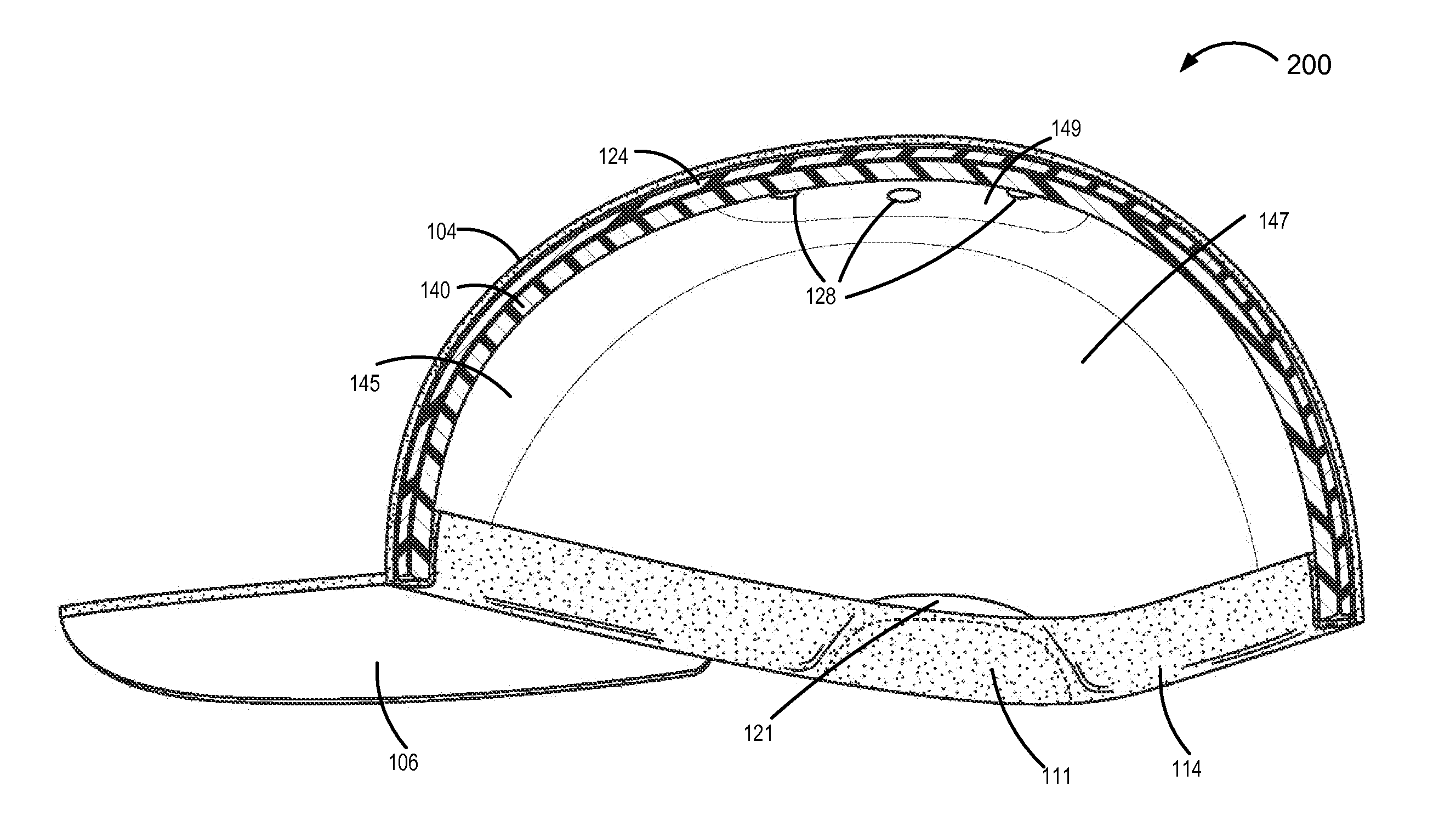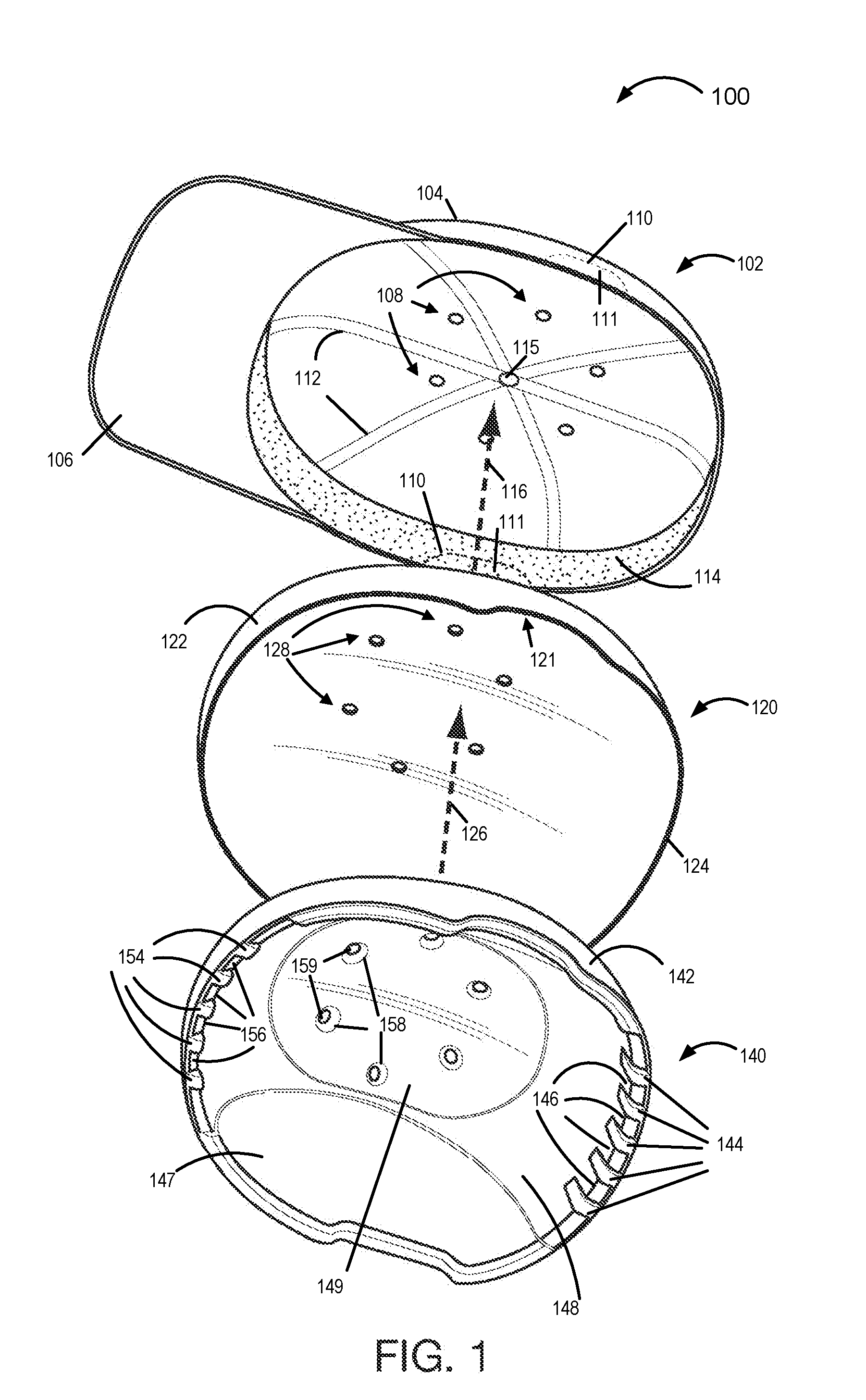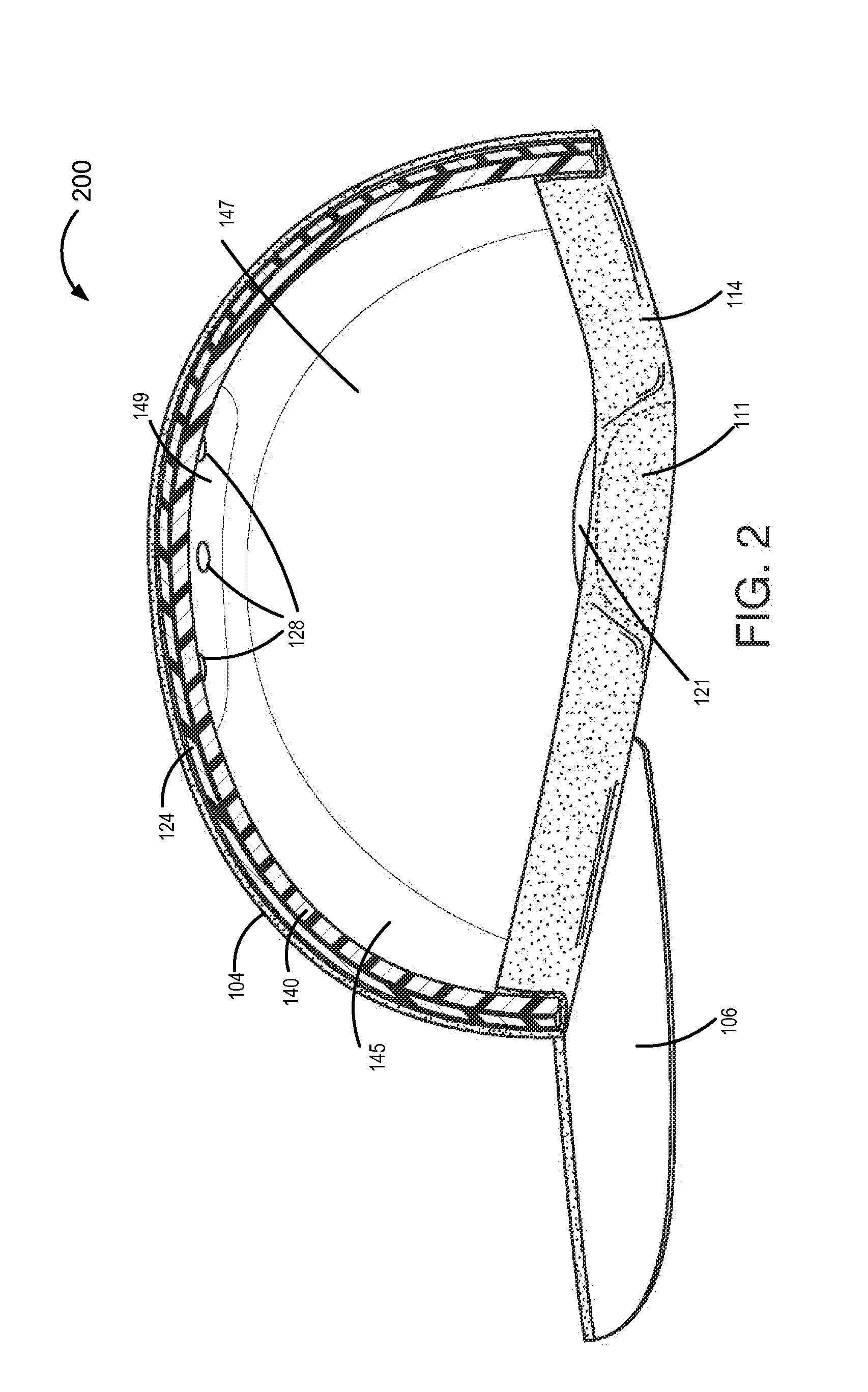Protective headgear
a protective head and helmet technology, applied in the field of protective headgear, can solve the problems of heavy helmets, people who tend not to wear, people with a tendency to catch heat, etc., and achieve the effects of deep impact protection, absorbing sweat, and adding impact protection
- Summary
- Abstract
- Description
- Claims
- Application Information
AI Technical Summary
Benefits of technology
Problems solved by technology
Method used
Image
Examples
Embodiment Construction
[0062]Referring to the drawings, FIG. 1 illustrates an exemplary protective device 100 in the form of headgear comprising a cap 102, an outer shell 120 , and a corresponding inner foam liner 140. As illustrated by arrow 126, the foam liner is inserted into the hard outer shell 120. The foam liner 140 is normally secured to the hard outer shell via an adhesive or by molding the foam liner directly into the shell so that it is adheres and conforms to the inside surface of the hard outer shell. While shown as separate components, during use the foam inner liner is secured to the hard outer shell and remains attached thereto as a combined outer shell and foam liner assembly, referred to herein as the combined assembly 120, 140. The combined assembly can be inserted into the cap 102 when protection from impacts is desired as shown by arrow 116. Depending on the embodiment the thickness of the foam liner may vary. In some embodiments the thickness of the foam liner is between 4 mm and 32 ...
PUM
 Login to View More
Login to View More Abstract
Description
Claims
Application Information
 Login to View More
Login to View More - R&D
- Intellectual Property
- Life Sciences
- Materials
- Tech Scout
- Unparalleled Data Quality
- Higher Quality Content
- 60% Fewer Hallucinations
Browse by: Latest US Patents, China's latest patents, Technical Efficacy Thesaurus, Application Domain, Technology Topic, Popular Technical Reports.
© 2025 PatSnap. All rights reserved.Legal|Privacy policy|Modern Slavery Act Transparency Statement|Sitemap|About US| Contact US: help@patsnap.com



